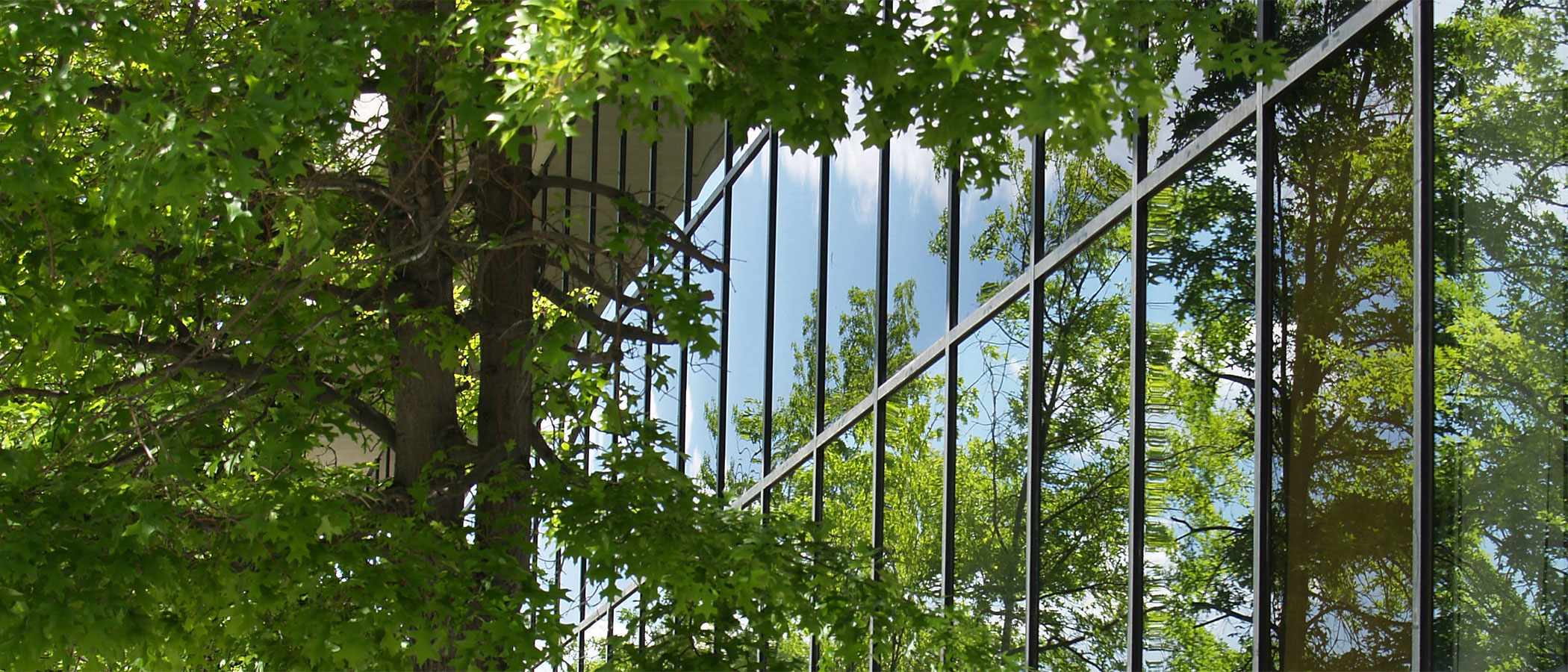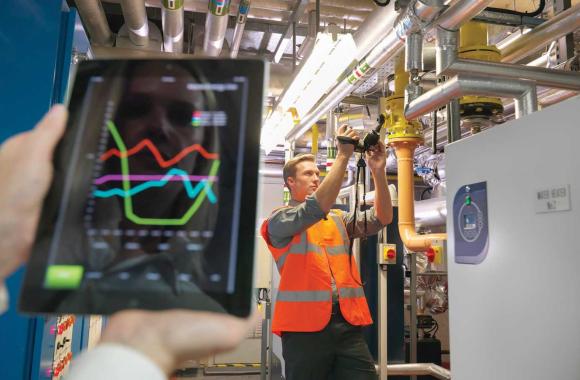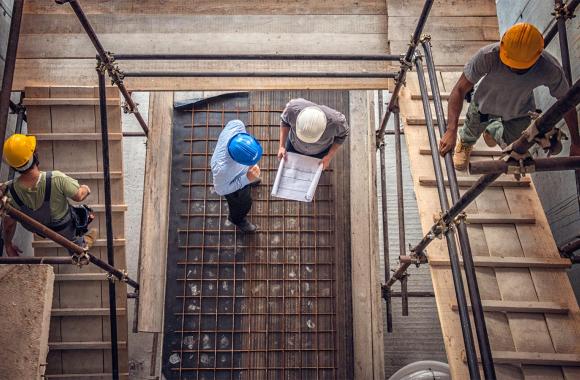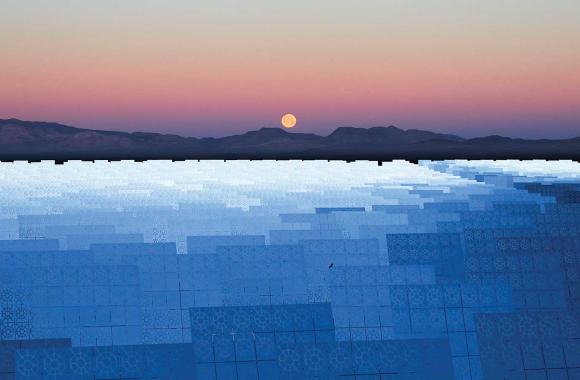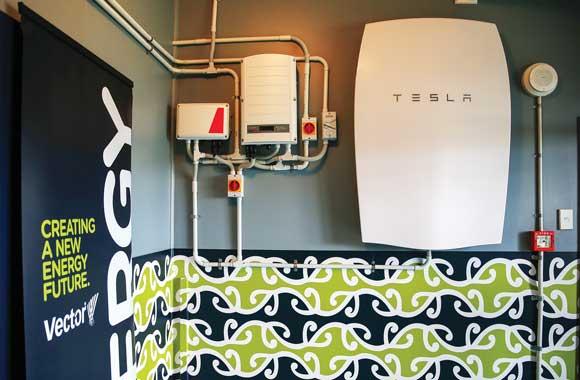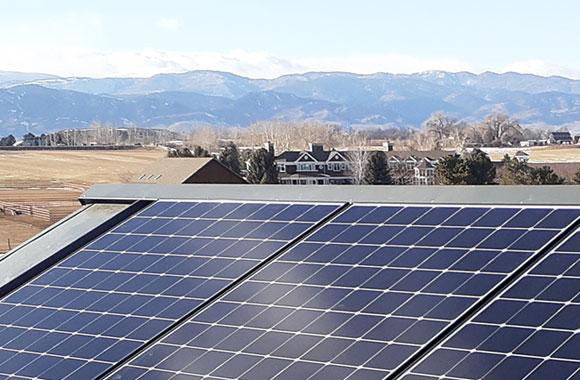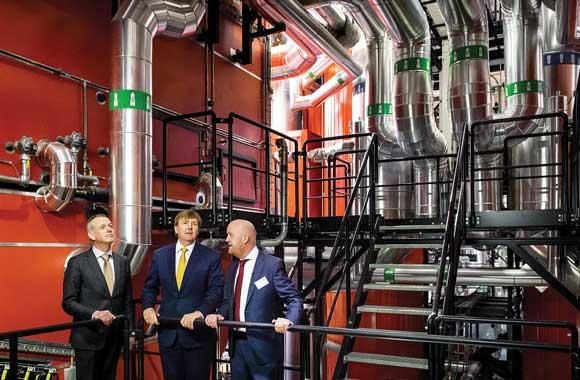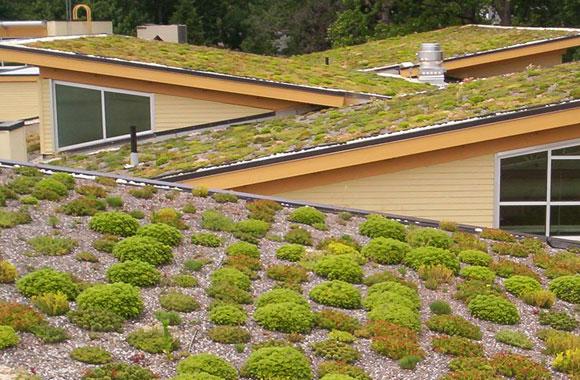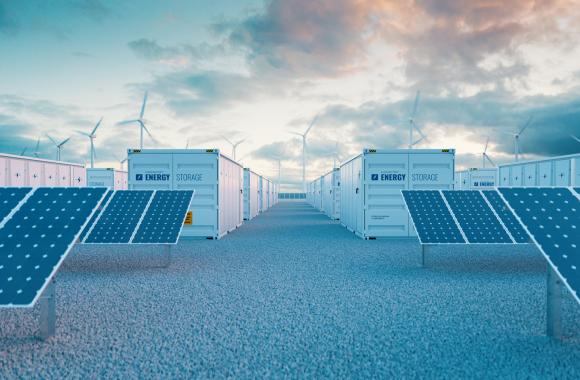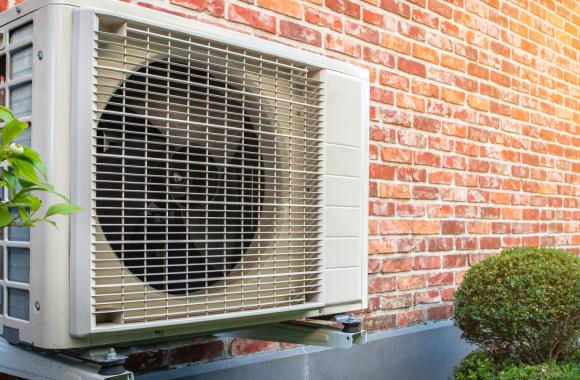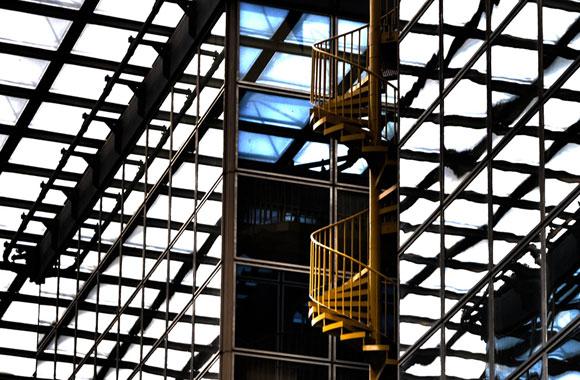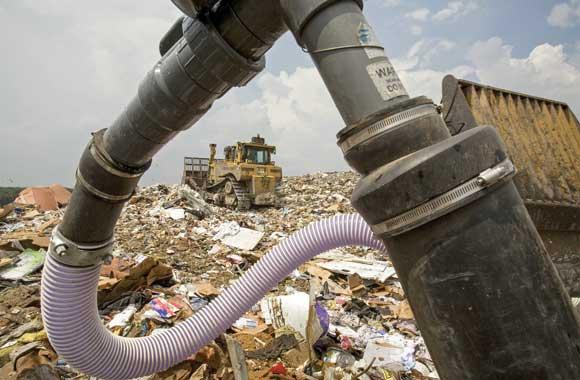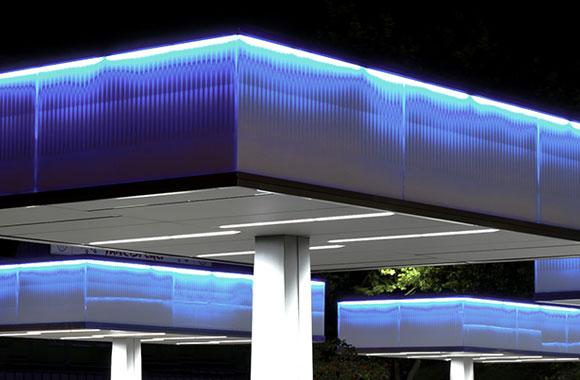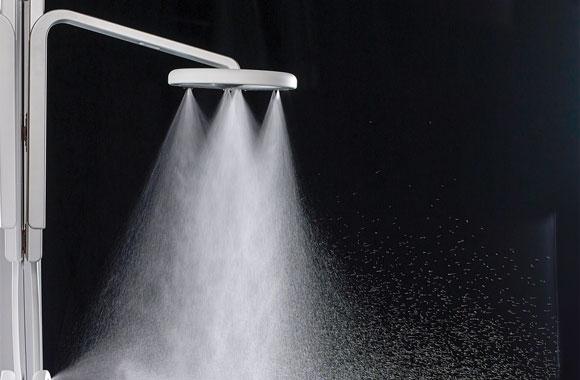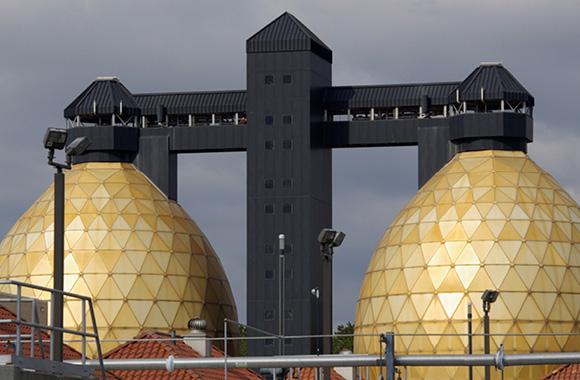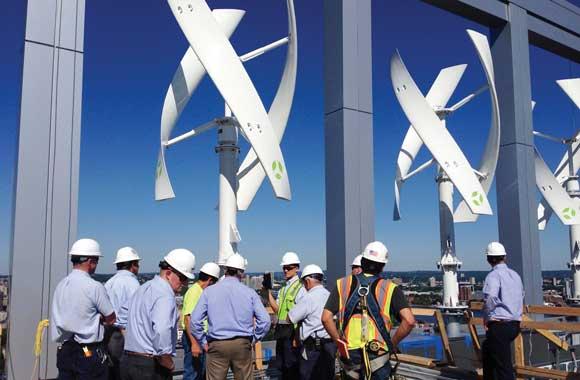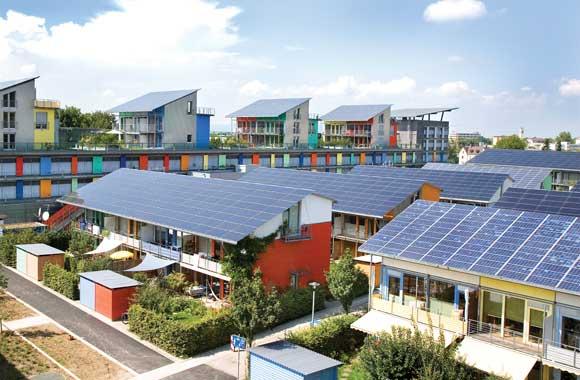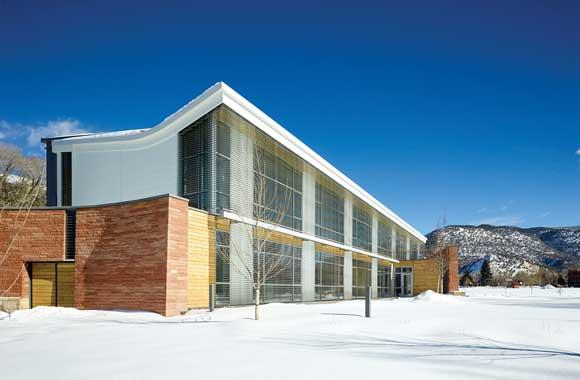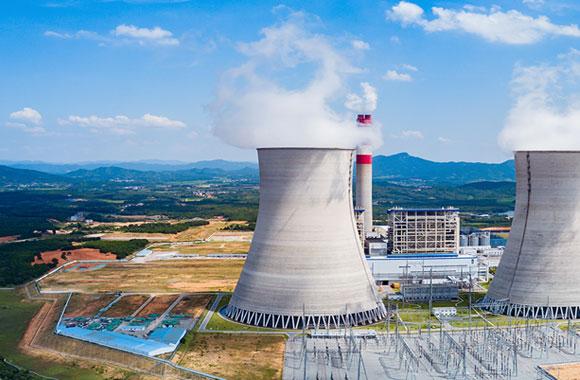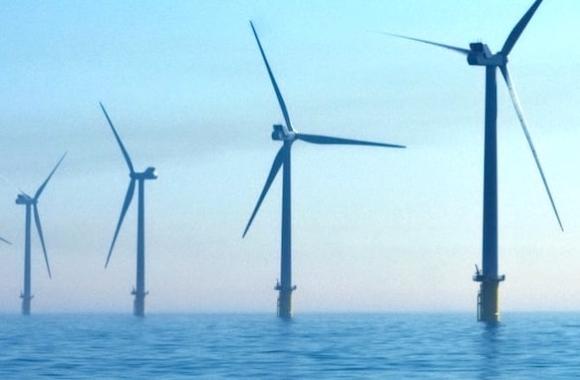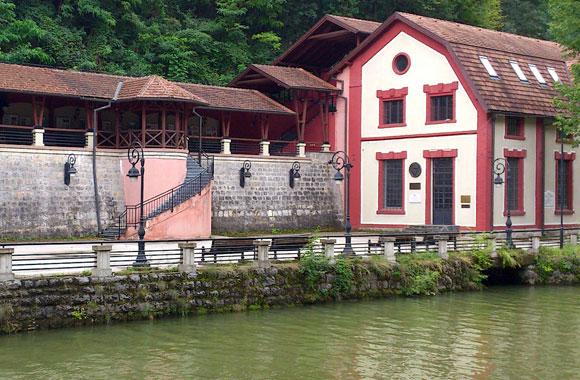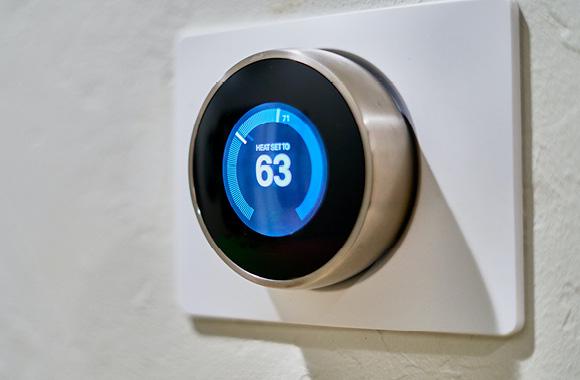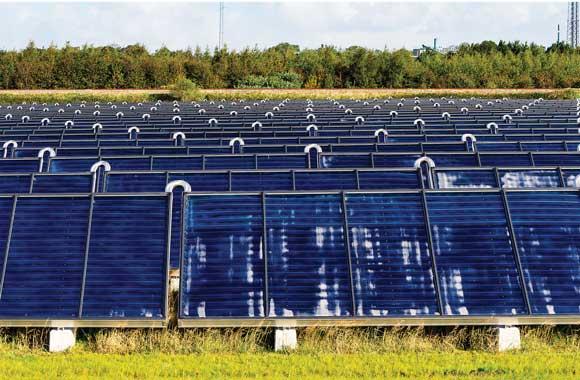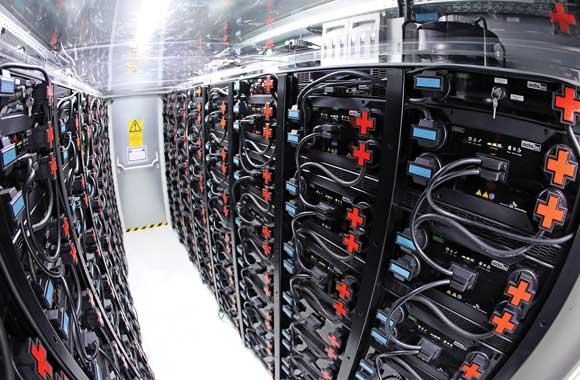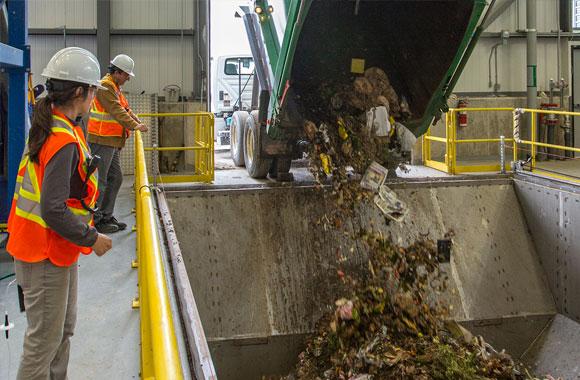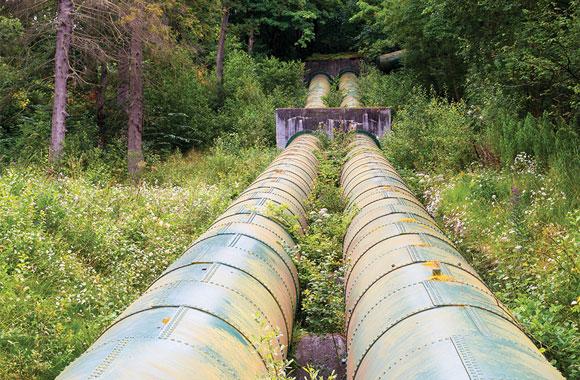Dynamic Glass
By responding to sunlight and weather, dynamic glass can reduce a building’s energy load for heating, cooling, and lighting. More effective windows lower emissions.
Reduced/Sequestered
2020–2050
To Implement
Operational Savings
Impact
Dynamic or “smart,” glass has an adoption rate of 0.5 percent of commercial building space in high-income countries. We assume that growth will occur primarily in the commercial sector in high-income countries that already see high adoption of static high-performance glass. We assume that dynamic glass can reach 30–50 percent of commercial building space in high-income countries by 2050. We estimate the potential energy efficiency at 9 percent for both cooling and lighting across climate zones. Both will vary depending on local climate and building location and orientation. Adopting dynamic glass can reduce emissions 0.34–0.54 gigatons. The additional financial cost is US$57.79–83.80 billion, yielding net lifetime operating savings of US$113.84–189.62 billion.
Introduction
Dynamic glass changes its opacity to reduce or increase the amount of light and heat allowed to pass through. This technology replaces high-performance static glass, which is already prevalent in commercial buildings in Organisation for Economic Cooperation and Development (OECD) countries.
Dynamic glass promises energy savings for heating and lighting in buildings and vehicles, though we focus only on architectural applications. Applications include regulating sunlight in buildings and reducing glare on rearview mirrors. Technologies that allow this include those that change in response to light, heat, or an electrical current (that is, by human control). Dynamic glass can greatly reduce the inefficiency of windows and other glazed surfaces and also can eliminate the need for shading, resulting in an increase in natural lighting in buildings. In this report, we examine the potential financial and climate impact of increased adoption of dynamic glass instead of high-performance static glass in commercial buildings.
Methodology
Total Addressable Market
We calculated the total addressable market for dynamic glass using our integrated buildings model, which sums up the total addressable markets of building floor area, roof area, space heating and cooling, and all other floor-area-driven total addressable markets used in the building sector. The estimated areas are also subdivided by building type (residential and commercial) and climate zone (guided by the ASHRAE 169 building climate zone standards). This model used numerous sources. We based the total addressable market for commercial architectural glass on the estimated growth in commercial floor area from this model and the average commercial window-to-floor-area ratio from several sources. We used recent sales data of dynamic glass from four market research sources to estimate the solution’s current adoption (the amount of functional demand in 2018, with 2014 as the base year) in square meters of glass installed (2.48 million) and in square meters of commercial floor area adopted (42 million).
Adoption Scenarios
We calculated impacts of increased adoption of dynamic glass from 2020 to 2050 by comparing two growth scenarios with a reference scenario in which the market share was fixed at current levels. We based scenarios on near-term projections and long-term targets from international organizations.
For near-term forecasts to 2022, we interpolated historical and trend data from estimates by Navigant Research (2014) with a far-future forecast guided by the World Green Buildings Council's target of 100 percent net zero buildings by 2050.
- Scenario 1: This scenario projects 30 percent adoption (3,992 million square meters) by 2050.
- Scenario 2: This scenario projects 50 percent adoption (6,653 million square meters) by 2050.
Emissions Model
We obtained lighting, heating, and cooling energy data for commercial buildings from several sources and weighted them by climate zone where possible. We found energy efficiency of lighting, heating, and cooling to be 7–9 percent. We included electricity and fuel consumption and based emissions factors on Intergovernmental Panel on Climate Change (IPCC) data.
Financial Model
First costs of dynamic glass are around three times those of conventional glass based on more than 20 sources, but we applied a learning rate of 8 percent. We didn’t find learning rate data for dynamic glass, so we used the learning rate of air-conditioning units (13 percent) to bound this. Because the technology is still relatively new and some types of dynamic glass use small amounts of electricity, we did not include operating costs of the glass itself. We did, however, include cooling, heating, and lighting costs.
Integration
We integrated the dynamic glass solution with others in the Buildings sector by first prioritizing all solutions according to the point of impact on building energy usage (building envelope solutions such as Insulation were first, building systems such as Building Automation Systems were second, and building applications such as High-Efficiency Heat Pumps were last). We calculated the impact on building energy demand for highest-priority solutions, reducing the dynamic glass input value to represent the impact of higher-priority building envelope solutions. We then used the output from the dynamic glass model as the input in lower-priority solutions.
Although we used the term “priority,” we do not mean to say that any solution was more important than any other, but rather that for estimating total impact of all building solutions, we applied the impacts of some solutions before others, and used the output energy demand after application of a higher-priority solution as the input to a lower-priority solution.
Results
All costs are presented in 2014 US$.
Scenario 1 avoids 0.34 gigatons of carbon dioxide equivalent greenhouse gas emissions compared with high-performance static glass. The net first cost to implement is US$57.79 billion (assuming that high-performance glass is purchased in the reference scenario), but this scenario saves US$113.84 billion in lifetime operating costs due to reduced energy consumption.
Scenario 2 showed 0.54 gigatons of emissions reduced and US$189.62 billion in lifetime net operational savings at a net first cost to implement of US$83.80 billion.
Discussion
Dynamic glass can help commercial buildings reduce their emissions and save operating expenses, though the costs would be significant. For buildings going through a retrofit anyway, it could be financially viable to have dynamic windows installed instead of static high-performance windows. For buildings that do not need any other retrofitting, the business case for replacing high-performance windows with dynamic windows may be weak. Regional variations in weather and dynamic glass price may affect this, however. Realistically, dynamic glass will be mainly adopted in wealthier regions with high average temperatures, such as Australia and the southern and western US. It may also make sense for some residential applications.
The high up-front cost of dynamic glass has inhibited its growth. As new competitors enter the market (including for transportation applications, which were not included in our model), the price is expected to drop, and adoption is expected to accelerate. Growth could be further driven with government support and the development of programs that demonstrate the benefits to consumers. It’s important to note, though, that for some areas and applications that still use non-high-performing glass, a large portion of the benefits of dynamic glass can be obtained more economically with high-performance glass. This is examined in another model.
References
Navigant Pike Research. (2014). Demand for smart glass will surpass 3 million square meters annually by 2020. Retrieved from https://www.navigantresearch.com/newsroom/demand-for-smart-glass-will-surpass-3-millionsquare-meters-annually-by-2020
What You Can Do
If your company will be investing in new facilities, make the sustainability—and business—case for including dynamic glass in the plans
Find, follow, and shine light on a company that's advancing dynamic glass technology.
- Expand your knowledge by exploring another Drawdown solution.

